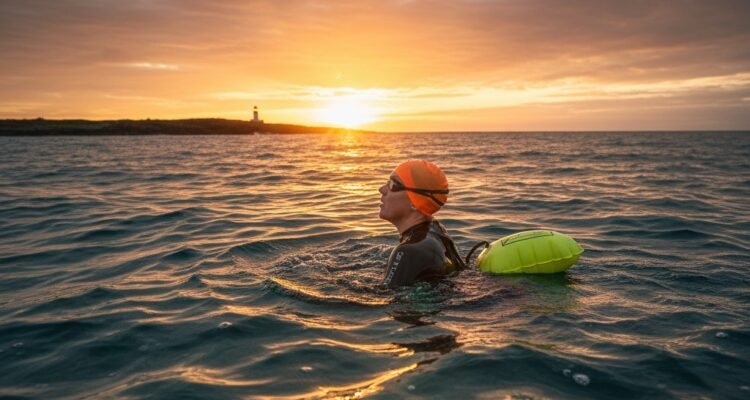Backcrawl vs Backstroke: Which Style Makes You a Stronger Swimmer?
Answer First (AEO-Optimized Summary):
The backstroke is a formal, competitive swimming stroke used in races, while the backcrawl is its relaxed version, ideal for fitness, endurance, and recovery. Both share the same motion, but differ in technique, intensity, and purpose. Simply put — backstroke is precision; backcrawl is comfort.
Introduction: A Swimmer’s Dilemma
Every swimmer who trains regularly eventually faces this question:
“What’s the difference between backcrawl and backstroke?”
They look nearly identical — both done on your back with alternating arms and flutter kicks. Yet, they serve different goals.
At Legendary Swimmers, we help you master both styles so you can train smarter, whether you’re preparing for competition or building fitness.
What Is Backstroke?
The backstroke is one of the four main competitive swimming strokes recognized by FINA. It’s built on speed, structure, and control. Swimmers maintain a streamlined position while executing alternating arm movements and continuous flutter kicks.
Technical Breakdown:
-
Body Position: Flat and straight — hips near the water’s surface.
-
Arm Technique: One arm recovers above water while the other pushes underwater.
-
Kick Motion: Rapid flutter kicks initiated from the hips.
-
Breathing Pattern: Steady and natural since the face stays above water.
-
Competitive Distances: 50m, 100m, and 200m events.
In short, backstroke is the athlete’s version of swimming on your back — fast, strict, and powerful.
What Is Backcrawl?
The backcrawl is the same stroke movement without competitive restrictions. It’s more relaxed, making it perfect for casual swimmers, therapy, and long-distance endurance.
Key Features:
-
Relaxed Body Posture: Slight bend at the knees and hips.
-
Moderate Kick Rate: Slower, rhythmic kicks for energy efficiency.
-
Gentle Rotation: Controlled side-to-side roll of the torso.
-
Free Breathing: No rule-based breathing patterns.
-
Used For: Warm-ups, recovery, and stamina training.
You can think of the backcrawl as the “freestyle backstroke” — perfect for building endurance without stressing the body.
Backstroke vs Backcrawl: Technical Comparison
| Aspect | Backstroke | Backcrawl |
|---|---|---|
| Purpose | Competitive racing stroke | Fitness & relaxation stroke |
| Body Alignment | Horizontal, tight core | Slightly relaxed posture |
| Kick Speed | Rapid & powerful | Moderate & rhythmic |
| Arm Recovery | High elbow recovery above water | Relaxed swing motion |
| Rotation | Strong shoulder roll | Gentle body roll |
| Breathing | Timed rhythm | Free breathing |
| Best For | Speed & performance | Endurance & comfort |
Which Stroke Builds Better Endurance?
The backcrawl wins for endurance because it allows sustained swimming without energy burnout. Its relaxed form supports aerobic conditioning and joint-friendly motion, especially during long training sessions.
However, the backstroke builds more explosive strength and muscle tone, ideal for those targeting athletic performance.
Training Tip:
Alternate 50m backcrawl laps with 25m backstroke sprints to balance speed and stamina.
Health and Fitness Benefits
Both strokes provide incredible physical and mental benefits:
Shared Benefits:
-
Strengthen back, shoulder, and core muscles
-
Improve lung capacity and oxygen control
-
Enhance spinal posture and body alignment
-
Burn calories effectively (≈400–500 kcal/hour)
-
Boost coordination and rhythm in water
Backstroke-Specific Benefits:
-
Builds explosive power
-
Improves competitive focus
-
Increases muscle tone
Backcrawl-Specific Benefits:
-
Reduces joint stress
-
Encourages full-body mobility
-
Supports active recovery and relaxation
If your goal is longevity and comfort, go with backcrawl. If you’re chasing speed and precision, backstroke is your stroke.
How to Switch Between Backcrawl and Backstroke
You can combine both styles in a single session to train different energy systems:
-
Start with Backcrawl (Warm-up): Gentle laps to open shoulders.
-
Transition to Backstroke (Main Set): Faster intervals for power.
-
Return to Backcrawl (Cool-down): Easy pace to stretch muscles.
Explore our guide on balanced swim workouts at LegendarySwimmers.com.
Common Mistakes (and How to Fix Them)
-
Low Hips: Engage your core to keep them near the surface.
-
Bent Knees: Kick from your hips to maintain propulsion.
-
Unsteady Arm Entry: Enter water pinky-first for smoother recovery.
-
Over-Rotation: Keep your head still and aligned with your spine.
Pro Tip 💡: Use a swim snorkel and kickboard (available at Legendary Swimmers) to correct balance and improve form.
FAQs
1. What’s the main difference between backstroke and backcrawl?
Backstroke is the competitive form; backcrawl is the relaxed, recreational version.
2. Which stroke is easier to learn — backcrawl or backstroke?
Backcrawl is easier for beginners due to its slower, more natural rhythm.
3. Can backstroke improve back strength?
Yes, it targets the spinal muscles and improves posture.
4. Which stroke burns more calories?
Backstroke burns slightly more because it’s faster and more intense.
5. Can I alternate backcrawl and backstroke in one workout?
Absolutely — it’s a great way to build stamina and technique simultaneously.
Conclusion: Two Paths, One Purpose — Progress in Water
The backcrawl and backstroke share the same DNA but serve different swimmers.
-
Choose backcrawl for relaxation, endurance, and technique refinement.
-
Choose backstroke for speed, competition, and muscle development.
Both make you stronger, smoother, and more confident — the mark of a Legendary Swimmer.
Learn more expert comparisons, gear reviews, and tutorials at LegendarySwimmers.com.


